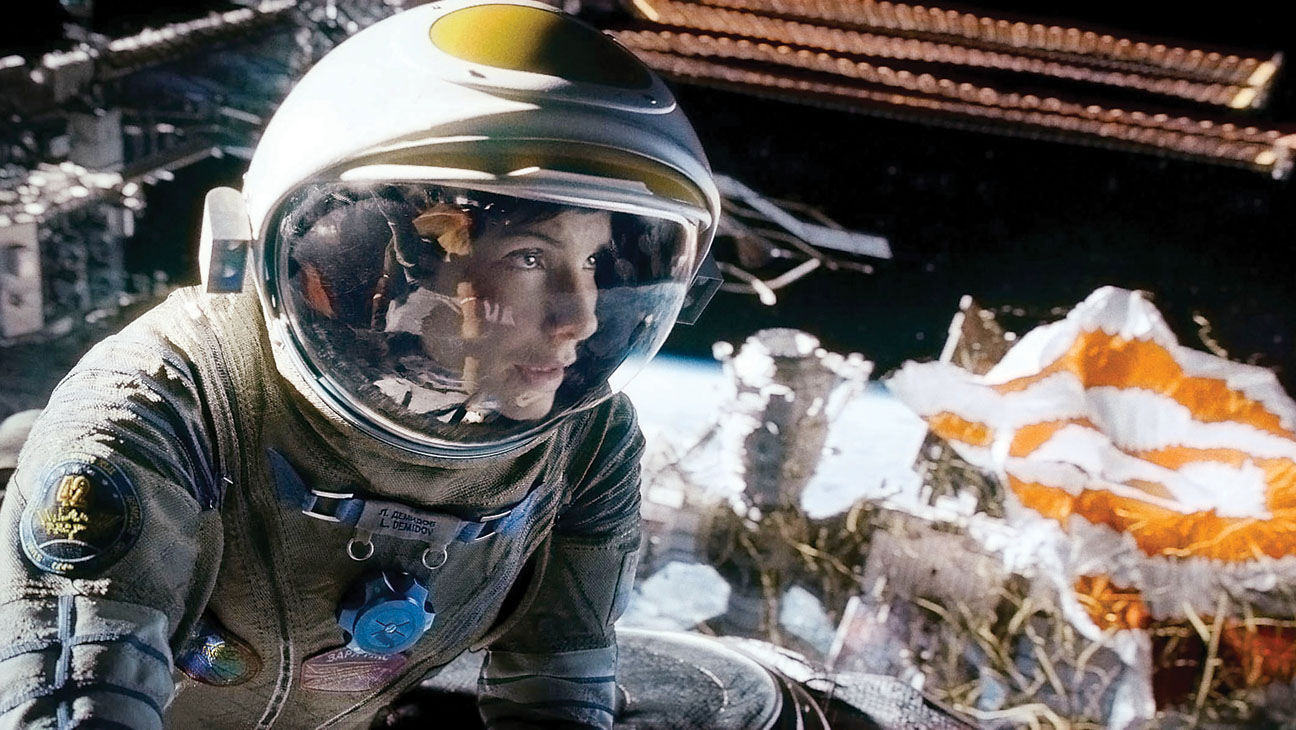
Amidst a post-summer binge of big-budget movies, director Alfonso Cuaron’s “Gravity” combines all the entertainment of a blockbuster with a sense of intensity and intimacy rarely achieved in highly touted films. The result is a superb movie that not only uses crisp texture and haunting audio effects to bend the viewer’s imagination, but also challenges moviegoers to examine the strength of the human spirit through an absolutely gripping story.
The film takes place almost entirely in space, as doctor Ryan Stone (Sandra Bullock) and lieutenant Matt Kowalski (George Clooney) work on gathering intelligence for the United States while aboard a small vessel. Without warning, neighboring satellites crash into their ship, leaving Stone and Kowalski stranded without communication and off-course in the depths of space. “Gravity” makes its intentions known early on, forgoing the use of character development and relationships in order to immerse moviegoers in an experience. Viewers are not forced to toil through a long backstory because they’re immediately thrust into space with the two astronauts. The sense of isolation and hopelessness that can only accompany the great unknown invades the theater without warning, as we begin to feel lost, just as Stone and Kowalski. It’s a brilliant choice, as moviegoers are fully able to experience the challenges the characters face without having to explore a heavy plot.
Perhaps even more fantastically done than the plot are the stunning visual effects in “Gravity” that pull the viewer into what feels like real life. The film achieves a crispness with every object flying through space, isolating that object against a backdrop of blackness. Cuaron uses the color of each item — whether it is the bright orange bursts of a flame inside a damaged ship, or the more muted, grey sockets and wrenches evading the grasp of his astronauts — to pull us into the frightening expanse of space. We feel isolated, even as the earthly, familiar hues of these objects exist amid invading blackness. Cuaron takes full advantage of each of these colors and exaggerates them, which only further increases a sense of loneliness that both scares and exhilarates the viewer as the film blasts on.
The visuals in this film are accompanied by the use of audio in a way that is unparalleled by any film in recent memory. Cuaron amplifies the grittiness of radio messages full of interference in order to capture the hopelessness of dead silence while loose in space. By including the radio as sound, instead of casual voice, we feel immersed in our very own suit, floating around space while Stone and Kowalski attempt to lead us to a ship. The total engagement of the viewer in not only the plot, but in the very setting which it takes place, is truly magic. Cuaron tops it off with an amazing use of a raspy, fading sound to punctuate the complete silence of space. Our ears only capture remnants of sound as we tumble, lost.
“Gravity” is an amazing display of versatile acting and nearly-perfect special effects that keep viewers on the edge of their seat. The film somehow manages to isolate us from the very theater in which we’re watching. We begin to drift, sweat, breathe and cry with the characters because we’ve become one of them, and in this way, “Gravity” is entertaining, artistic and a true cinematic experience.
Rating: 5 stars








